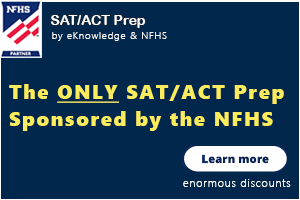Pre-Contest Medical Time-out is Effective Emergency Planning
By Neha Raukar, M.D., and Javier Cardenas, M.D. on January 14, 2020 hst PrintIs there a qualified medical professional on site? Is there an Emergency Action Plan (EAP) for this venue? Is there an Automated External Defibrillator AED) available and accessible? Where does emergency medical services enter this facility?
These four questions define the pre-contest medical preparedness discussion; commonly known as the “pre-contest medical time-out.” The purpose of these questions is not to cancel the contest if any of the answers to the questions is “no,” but to ensure emergency preparedness and a timely emergency response in the unlikely situation of a medical emergency.
While limb and life-threatening injuries in sport are rare, the outcomes can be devastating. As such, emergency preparedness is key to preventing death and disability in an otherwise healthy population.
Keys to a well-prepared EAP include identification of emergency facilities, thorough documentation, practice and execution(1). The written plan should describe the key personnel, necessary equipment, communication and protocols for emergency scenarios( 2). The EAP should be venue-specific and practiced regularly. When done properly, the execution of an EAP in an emergency situation is deliberate and measured.
Eighty percent of the injuries in young athletes are due to sudden heat-related illness, sudden cardiac arrest and trauma, including injuries to the brain and cervical spine. This is commonly referred to as “Heat, Heart and Head.”
Sudden cardiac arrest represents the most common cause of death in athletes(3). While the risk factors are often undetectable by current medical screening tools, including an EKG, the sudden collapse of an athlete should always immediately prompt an evaluation for sudden cardiac arrest.
AEDs provide the most effective means of survival in the event of cardiac arrest. Modern AEDs are entirely self-explanatory, with voice prompts that help the user determine which patients need to be shocked, and delivering those shocks, with little to no training. Given the ease of use, and the device’s efficacy in decreasing the number of sideline deaths, AEDs should be a standard piece of equipment for any athletic team.
Despite the rarity of a sideline fatality, when it does occur, it is often the result of lack of preparedness of the sideline team. One of the most commonly encountered hurdles when implementing an EAP is the impeded arrival of emergency medical services. It is important to be cognizant of the restrictions encountered by EMS given that school-based athletic activities may not have the same access points that are available during school hours. Locked gates and closed parking lots result in delays in emergency personnel arrival and is often cited in high-profile cases of catastrophic sport-related injuries. While it is unclear if the delay had an impact in all cases, the timely arrival of emergency medical services is crucial.
According to the National Athletic Trainers Association(4), the presence of a medical professional (specifically athletic trainers) minimizes risk of the athletes, contains medical cost, influences academic success and serves in an administrative role in sports.
Athletic trainers work to prevent injuries in their athletes and provide treatment when their athletes are injured. They are the “boots on the ground,” providing immediate response to health emergencies, including sudden cardiac arrest, heat-related illness and head injury. They develop and execute the EAP for their school and venue. They play a key role in the medical care of athletes, often facilitating communication with team physicians, primary care physicians and parents.
A number of state high school associations have implemented the pre-contest medical time-out and the reception has been overwhelmingly positive. The health and safety of our most vulnerable population remains the focus of every decision in athletics, and the pre-contest medical time-out serves as a point of emphasis for each and every participant. In the rare occasion that an EAP needs to be executed, emergency preparedness is key in preventing catastrophic events.
References:
Andersen, JC.,Courson, R.W., Kleiner, D.M., McLoda, T.A. National Athletic Trainers’ Association Position Statement: Emergency Planning in Athletics. Journal of Athletic Training 2002;37(1):99–104.
Casa, D., Guskiewicz, K., Anderson, S., Courson, R., Heck, J., Jimenez, C., et al. (2012). National athletic trainers’ association position statement: preventing sudden death in sports. Journal of Athletic Training 47(1), 96-118.
Drezner, J. A., Courson, R. W., Roberts, W. O., Mosesso, V. N., Link, M. S., & Maron, B. J. (2007). Inter-Association Task Force Recommendations on Emergency Preparedness and Management of Sudden Cardiac Arrest in High School and College Athletic Programs: A Consensus Statement. Journal of Athletic Training, 42(1), 143–158.
Athletic training services: An Overview of Skills and Services Performed by Certified Athletic Trainers. National Athletic Trainers’ Association. January 2010. https://www.nata.org/sites/default/files/guide_to_athletic_ training_services.pdf.
Neha Raukar, M.D., and Javier Cardenas, M.D.
Neha P. Raukar, M.D., is an emergency medicine and sports medicine specialist at the Mayo Clinic in Rochester, Minnesota, and a member of the NFHS Sports Medicine Advisory Committee. Javier Cardenas, M.D., is a neurologist and director of the Barrow Concussion and Brain Injury Center in Phoenix, Arizona, and a former member of the NFHS Sports Medicine Advisory Committee.
Most Recent Articles
- nfhs news NFHS Learning Center Unveils School Honor Roll Program
- NFHS Network Contact Information
- nfhs news Shout-out to Health-Care Workers and State High School Associations
- state news Stadiums Across Colorado Light Up to Show Support for Students
- gymnastics-girls article ‘They became a family’: How New Castle gymnastics qualified for state for first time since 2002



